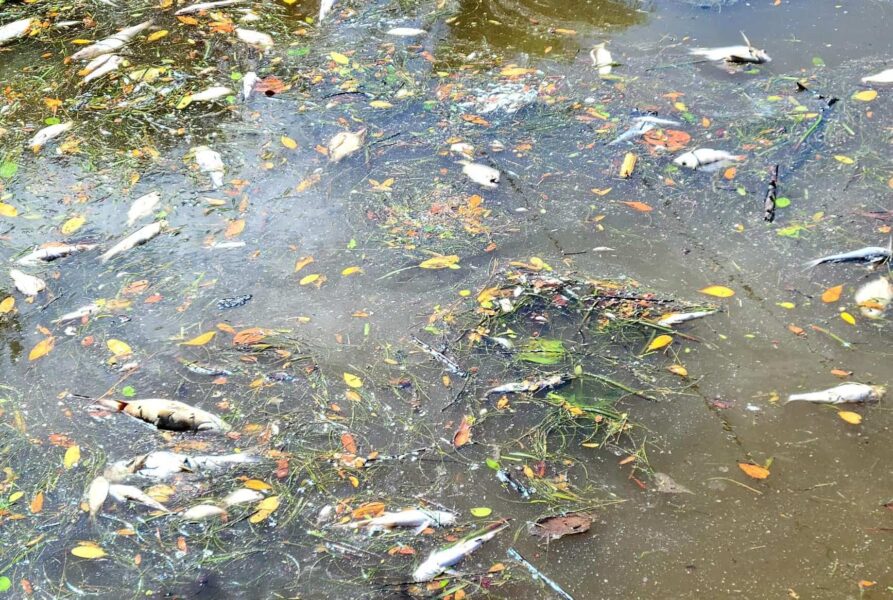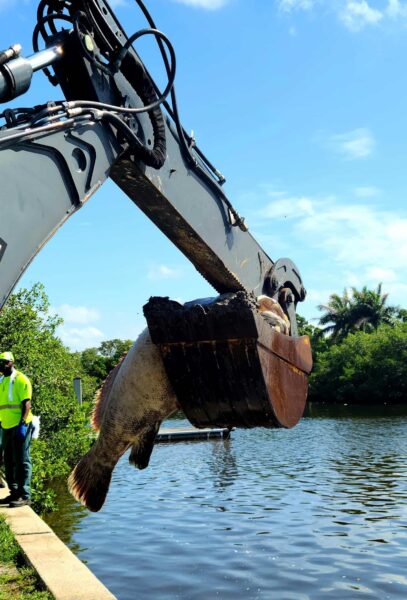Thrive
Lawmakers could repeal local fertilizer bans

The summer rainy season is rapidly approaching, and St. Petersburg will continue its 14-year tradition of banning fertilizer use to prevent harmful nutrients from reaching waterways and fueling toxic algal blooms.
Pinellas County and at least 25 of its municipalities also implement a similar ordinance from June through September. However, State Rep. Lindsay Cross (D-St. Petersburg) and conservationists throughout the state believe lawmakers are on a path to repeal local restrictions.
A budget proviso sends $250,000 to the University of Florida’s Institute of Food and Agricultural Science (IFAS) to study the “effectiveness of the timing of seasonal fertilizer restrictions on urban landscapes toward achieving nutrient objectives for waterbodies statewide.” It emerged in the recent legislative session’s final days without public hearings.
The proviso also pauses any new local regulations for a year.
“I think they want a study to show that they’re (the restrictions) not effective,” Cross said. “So that they can pass a law to eliminate all of them.”

The 2023 Legislative Session was Rep. Lindsay Cross’ first.
Cross, an environmental scientist, is not alone in her belief. A 55-group coalition penned a letter urging Gov. Ron DeSantis to veto funding the study.
Critics say the initiative wastes taxpayer money by restudying established scientific facts: Fertilizer application during the rainy season increases nitrogen and phosphorus levels in waterways, and stringent restrictions improve water quality.
Toxic blue-green algae and Karenia brevis, the organism that causes red tide, feed off those harmful nutrients. Researchers with the Tampa Bay Estuary Program have also linked increased phosphorous and nitrogen loads – like what resulted from the emergency release of 215 million gallons of wastewater into the bay from the former Piney Point phosphate plant – to critical seagrass loss.
A letter signed by James Scott, chair of the Sierra Club Florida, highlighted two reasons his organization believes the study is nonsensical.
“In a state as large as Florida, $250,000 will be insufficient to effectively fund any program, much less one that would require funding for a full calendar year in order to accurately track changes in waterbodies from season to season,” Scott wrote. “Moreover, this is something that the University of Florida has already studied in a more substantive way with IFAS data.
“UF-IFAS and the Florida Department of Environmental Protection have been recommending the avoidance of nitrogen and phosphorus fertilizer application during the rainy season since they first started publishing Florida Yards and Neighborhoods manuals in the early 1990s.”
Sarasota County enacted the state’s first seasonal fertilizer ban in 2007. St. Petersburg officials adopted theirs in 2009, and Pinellas commissioners approved the county ordinance in 2010.
Why explore preempting local restrictions after the lower Gulf Coast endured a severe red tide outbreak from October 2022 to April 2023? For Cross, the answer is simple – money.
“I think it’s lobbying from fertilizer companies,” she said. “They see this as a threat to their business, and rather than changing or evolving their business model, they’re just trying to hide against anything that goes against their perceived ability to make money.”

City workers pulled this goliath grouper from a waterfront St. Petersburg park during a severe red tide outbreak in 2021.
Cross relayed that a local fertilizer company, Sunniland, created a “summer safe” blend when Pinellas adopted its seasonal retail sales restrictions. She said it contained things like iron that still support healthy lawns but not the harmful nutrients known to impact water quality.
Cross credited Sunniland’s owners for the “bold,” “creative,” and “ingenious” pivot. She also wonders why officials from much larger companies don’t follow their lead.
Her primary concern is that those overseeing the study could engineer it to receive the desired results. She expressed her desire for conservation groups to participate.
If DeSantis approves the initiative, IFAS would have until the end of the year to complete the study and submit its findings to the Legislature. Local governments could not enact new bans – or extend or modify existing restrictions – From July 1 until June 30, 2024.
While most of the region’s local governments have already adopted fertilizer ordinances and are “grandfathered in,” Cross warned that lawmakers could use the study’s results to justify repealing existing regulations.
“I mean, the Legislature can do whatever they want,” Cross added. “They have made bills retroactive when it comes to preempting other forms of local government. There could easily be a bill that says no municipality can have a local fertilizer ordinance.”
She likened the study to a roadmap highlighting where lawmakers would eventually like to arrive. Cross also noted the proviso and other legislation supporting environmental sustainability are contradictory.
Scott’s letter to the governor asks how a one-year, underfunded study could contribute anything not covered in 30 years of previous research. It states that rainy season fertilizer restrictions are a “nonpartisan, common sense approach to protecting the environment and economy.”
Cross also broached the monetary aspects, as local governments continue spending billions upgrading storm and wastewater infrastructure. She relayed that a 20-pound bag of fertilizer is around $40, and it can cost taxpayers nearly $2,000 to remove one pound of nitrogen from the state’s waterways.
“The math just doesn’t add up,” Cross said. “If you want to be fiscally conservative, pollution prevention has to be the first step. And the most aggressive one.”








Hugh J. Hazeltine
May 28, 2023at4:54 pm
I see this as related the Banking on Seagrass article. What is the point if we continue to cloud the water?
Thank you Karl for your efforts.
Paul
May 18, 2023at8:29 am
The party of “small government”, and “local control” hard at it to do the exact opposite.
Karl Nurse
May 17, 2023at4:02 pm
Actually, there are more than 100 local governments that passed fertilizer ordinances. St Pete was the 2nd. I am proud to have helped pass it .
Banning the summertime fertilizer ordinances are like prohibiting turning off the water when you have a plumbing leak.